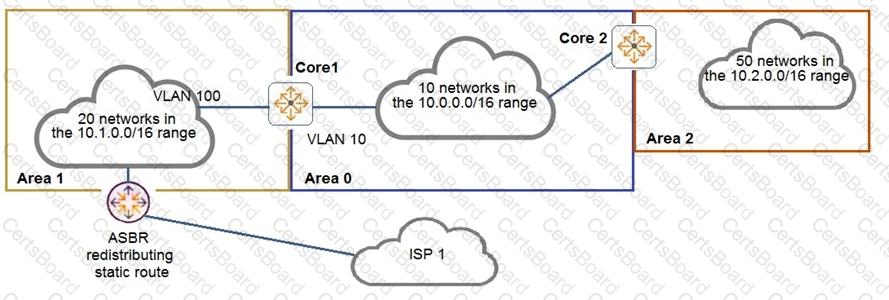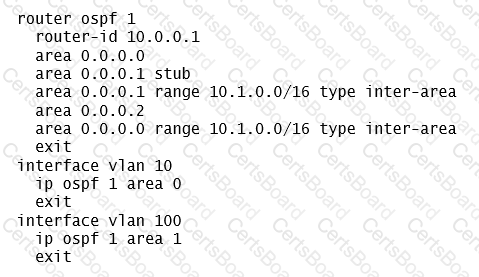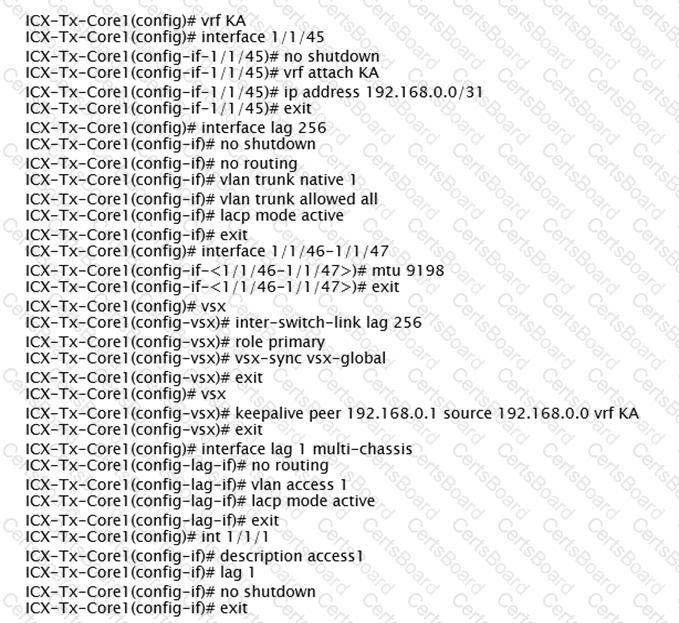When implementing user-based tunneling on an AOS-CX switch, which component defines the primary and backup Aruba gateways?
An administrator is defining a VSX LAG on a pair of AOS-CX switches that are defined as primary and
secondary. The VSX LAG fails to establish successfully with a remote switch; however, after verification, the remote switch is configured correctly. The administrator narrows down the problem to the configuration on the AOS-CX switches.
What would cause this problem?
An administrator will be deploying HPE Aruba Networking Switch Multi-Edit Software to manage an Aruba solution. What does Switch Multi-Edit Software support?
What are best practices when implementing VSX on AOS-CX switches? (Choose two.)
Examine the network topology.

The network is configured for OSPF with the following attributes:
 Core1 and Core2 and ABRs
Core1 and Core2 and ABRs
 Area 1 has 20 networks in the 10.1.0.0/16 range
Area 1 has 20 networks in the 10.1.0.0/16 range
 Area 0 has 10 networks in the 10.0.0.0/16 range
Area 0 has 10 networks in the 10.0.0.0/16 range
 Area 2 has 50 networks in the 10.2.0.0/16 range
Area 2 has 50 networks in the 10.2.0.0/16 range
 The ASBR is importing a static route into Area 1
The ASBR is importing a static route into Area 1
 Core2 has a summary for Area 2: area 0.0.0.2 range 10.2.0.0/16 type inter-area
Core2 has a summary for Area 2: area 0.0.0.2 range 10.2.0.0/16 type inter-area
Here is the OSPF configuration performed on Core1:

Based on the above information, what is correct?
An administrator of a large campus network needs a solution that will provide root cause analytics to quickly identify problems so that they can quickly be fixed.
Which AOS-CX switch feature should the administrator utilize to help with root cause analytics?
A network administrator wants to centralize the management of AOS-CX switches by implementing NetEdit.
How should the administrator purchase and/or install the NetEdit solution?
Examine the VSX-related configuration of the core layer AOS-CX switch:

A network administrator is troubleshooting a connectivity issue involving the VSX LAG (link aggregation) between the core and access layer switch, during HW replacement of one of the core switches.
Which configuration should the administrator add to the core switch to fix this issue?
What is the correct way of associating a VRF instance to either a VLAN or an interface?


